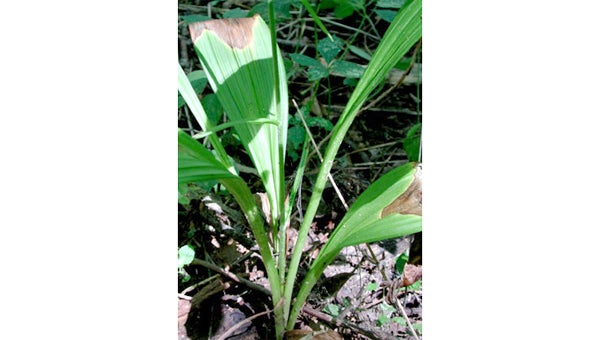Polk County’s most wanted plants: False-hellebore
Published 1:15 pm Wednesday, August 8, 2012

The basal leaves of Veratrum woodii are the best way to identify the plant, as it flowers only sporadically. (used with permission of the Illinois Natural History Survey, Prairie Research Institute, University of Illinois at Urbana-Champaign)
Editor’s note: This article is the first in a series about plant species in Polk County. The Pacolet Area Conservancy (PAC) and David Campbell will provide information about one particular plant species each month. They ask residents to let them know if they can identify where the “most wanted plant” described each month can be found in the area.
The Pacolet Area Conservancy (PAC) and David Campbell have identified this month’s Most Wanted Plant” – Veratrum woodii, also known by the common names False-hellebore, Wood’s false-hellebore and Ozark bunchflower, to name a few.
The purpose of this project is to gain a better understanding of the flora in Polk County and documenting the species present in the county, making sure that the flora of Polk County is well represented in state records and herbaria. The only extensive study was conducted in the 1950s and 1960s by Oliver Freeman.
In North Carolina, Veratrum woodii is considered to be disjunct from its typical distribution in the Ozarks. It is one of several species that have been found in Polk County and nowhere else in North Carolina (as far as experts know). Freeman first described the species in Polk County in the mid-1900s, and a specimen is housed at the herbarium at UNC Asheville. This species was recently discovered nearby, in northwestern South Carolina, which gives rise to hopes that it may still occur in Polk County.
Veratrum woodii is a perennial herb that prefers to grow in neutral soils in woodlands, typically in soils over mafic rocks (such as amphibolite) or in other calcium-rich soils. It flowers in the summer, sometime during the months of July-August. The flower of this species occur on a 3-6 foot tall stalk ending in a “panicle,” a branched cluster of flowers in which the branches contain short stalked flowers. Each flower has dark, maroon petals that are 6-9 mm long. However, flowering is often sporadic; therefore, the plant is best identified by its leaves. Veratrum woodii is a monocot and has simple leaves with parallel veins. Basal leaves are “oblaceolate to obovate,” egg-shaped, with the narrow end attached to the stalk, and are 3-10 cm wide.
If you think you have this species growing on your property, or if you know where it might be located, contact PAC at 828-859-5060, or e-mail comments, questions or photos to landprotection@pacolet.org.
– article submitted by Pam Torlina



